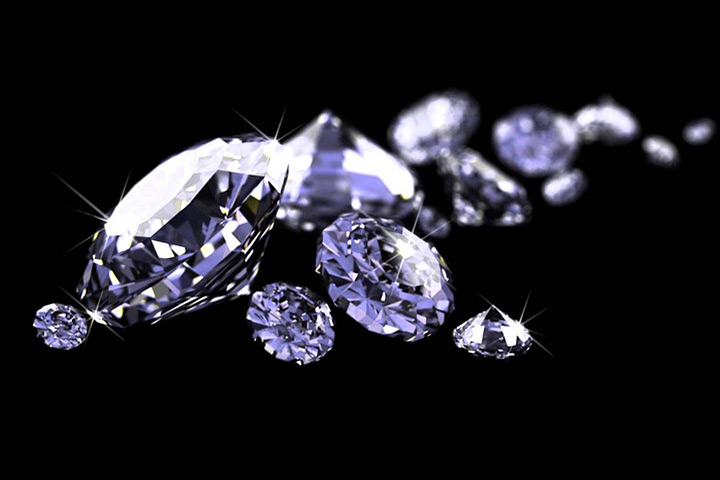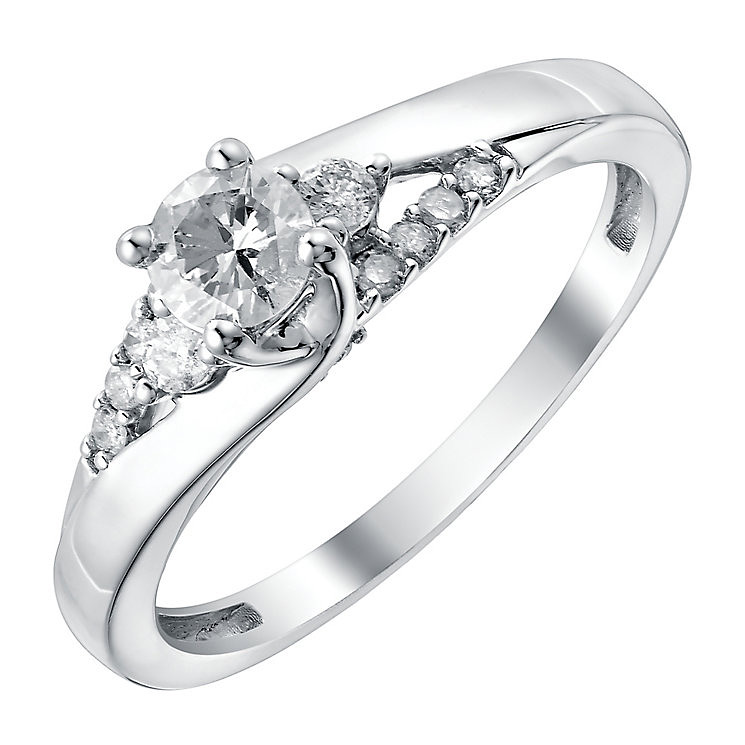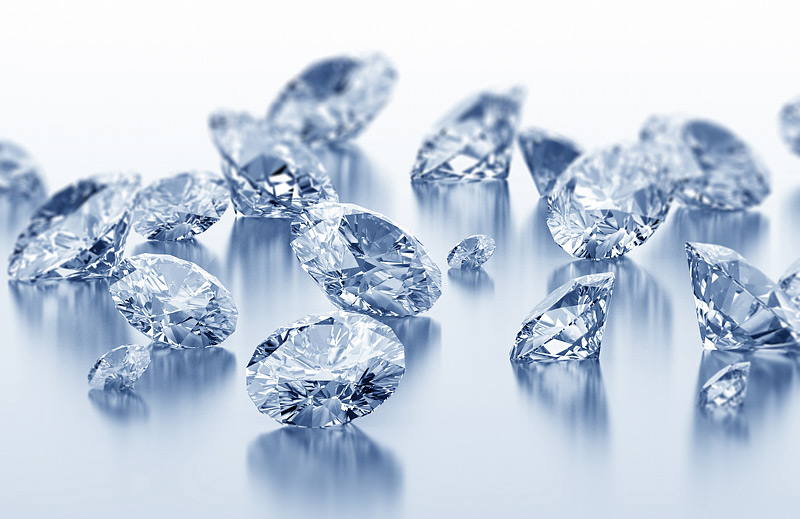
Some time in your life you might come across jewelry or single stones, either as an heirloom, gift or by some other means, and you might wonder if those diamond-looking jewels are real! While there are many beautiful stones that look like diamonds, you’ll still want to know if what you have in your possession is real or not.
If your jewels are not in a setting, the process of determining their authenticity is easier because you can see the whole stone. Keep reading for some easy ways to tell if your diamond is real or fake!
1. Sand Paper Test
A diamond is the hardest mineral on earth. The only thing that can cut a diamond is another diamond. If you suspect you have a fake on your hands, and you don’t mind possibly ruining the stone, rub the stone with sand paper. A fake will scuff up no problem while a real diamond will not. Kind of a scary method, however!
2. Buoyancy Test
Diamonds are very dense. Place a diamond, without a setting, into a glass of water. If it sinks to the bottom right away, it could be real. If it floats or hangs out in the middle of the glass, it’s not real. However, some stones will also sink so pair this test with another!
3. Brilliance & Fire
Diamonds bend light in such a way that they sparkle grey and white within the diamond. This is called brilliance. It will also reflect rainbow light onto surfaces when held up to the light, called fire. If you look directly at your diamond and you see rainbow colors throughout, and not the grey and white brilliance, it’s probably not real.

4. Newspaper Test
Because a diamond has a high refractive index, it bends light all over the place. This means that if your stone isn’t in a setting, you can place it over a newspaper and the light will scatter inside the real diamond and prevent a black reflection. A fake diamond will let the black shine through, and you may even be able to read a word depending on the size of the fake stone.
5. Look for Imperfections
Most, if not all, natural diamonds have some flaws in them. Little spots of different colors and even the way it’s cut won’t be perfectly symmetrical. This is known as the clarity of the diamond. More expensive diamonds will have less flaws. So, if you do notice imperfections, you could have the real deal!
6. The Fog Test
Real diamonds conduct heat extremely well- if you breathe onto a diamond and the fog from your breath disperses quickly, it could be real! Fake diamonds will retain heat for longer. It’s best to use this method against a diamond you know is real. This test is also ideal for a stone within a setting.
7. Take It to an Appraiser
The only true way to determine if the jewels you have are real or not, is to take them to a diamond appraiser. A professional gemologist will quickly be able to determine their authenticity. Just make sure the gemologist is legitimate and accredited! If you think you have a set of jewels that could be real, definitely go through this list of tests! If they happen to be in a setting, the setting should be a quality metal- that’s also an easy indicator of a quality stone. But the best way to tell is having a professional evaluation!

What it could be instead of a diamond:
White topaz — Topaz is a mineral that is usually tinted yellow, red, brown, or pale gray, but can sometimes be white or appear colorless. Diamonds are much harder than topaz, however, which can wear down and scratch over time making it dull or cloudy.
White sapphire — We usually think of sapphires as being blue, but this gem can also be white. Just like topaz, sapphires are prone to more damage than diamonds and do not have the same fire and brilliance of a true diamond.
Cubic zirconium — Mass-produced since 1976, cubic zirconium scratches easily and does not have the same fire and shine as diamonds.
Moissanite — Moissanite is harder than cubic zirconium and these stones are visually dazzling. The main difference is that moissanites have a different brilliance than a diamond where you can see rainbow colors within the stone, giving it a disco ball effect.
Lab grown — Lab-grown diamonds are technically “real” diamonds both chemically and physical, but they will not fetch for the same price as a mined diamond. Hirsch says they usually sell for about 20% to 30% less than a traditional diamond.
So the next time you run across something you think is just cheap costume jewelry, it’s important to test it — just in case.




Leave a Reply